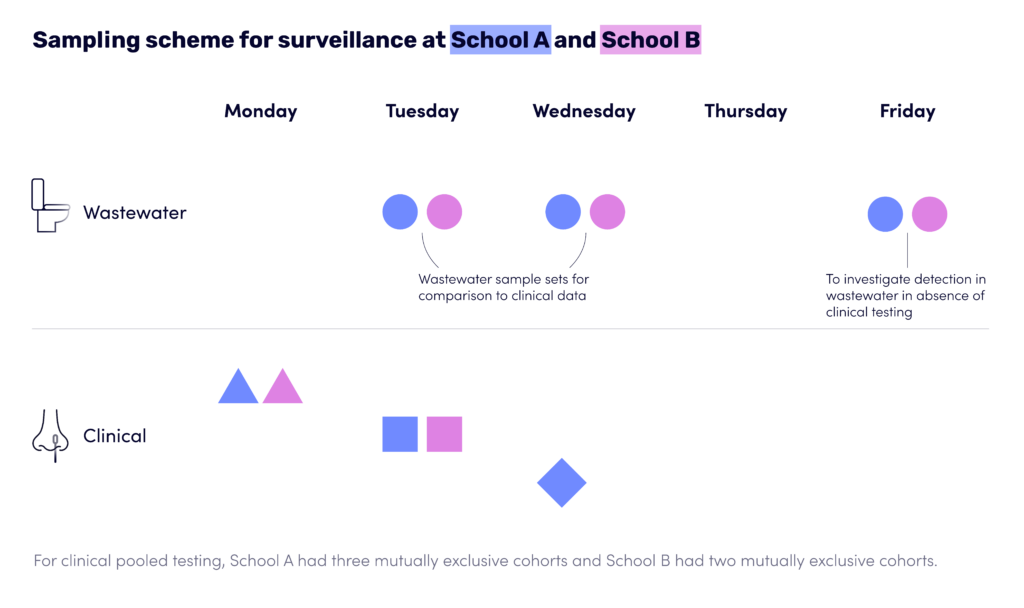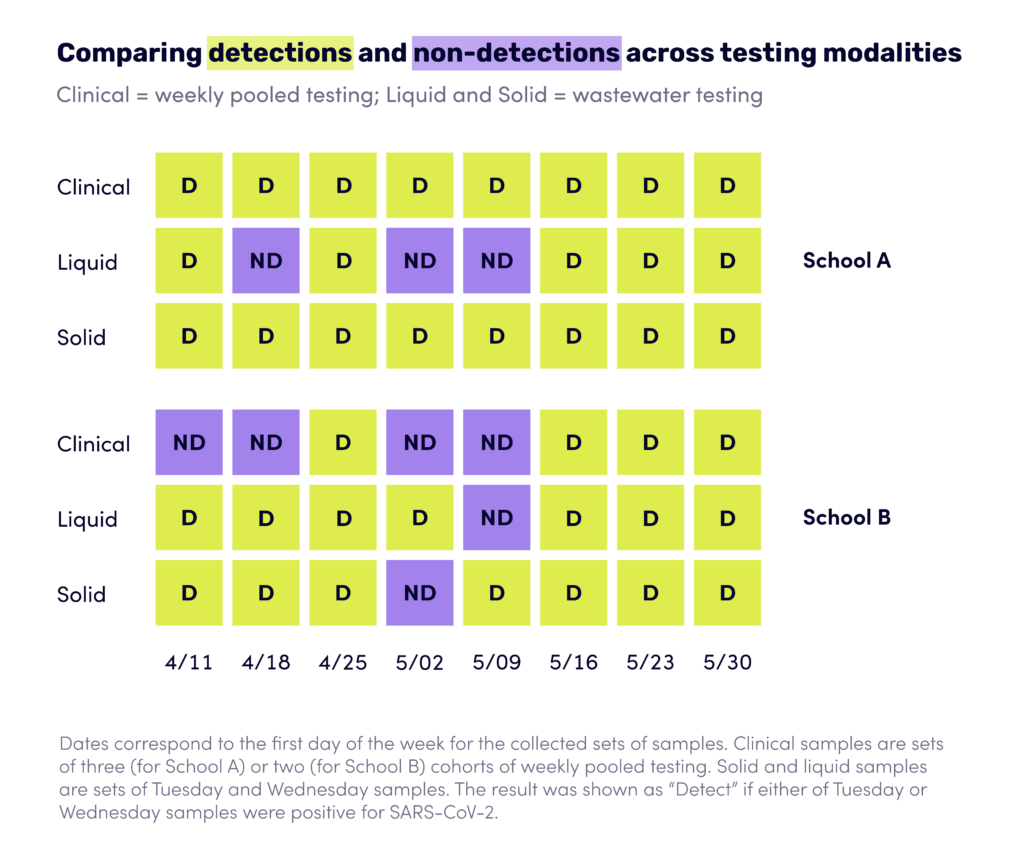Layering up for COVID-19: New research tests wastewater signals against clinical testing
January 31 2023

The new year is a time for big ideas, healthier habits, and fresh starts. One of our 2023 resolutions is to make biosecurity more flexible and accessible for our partners. Our latest research into multi-layered approaches is giving us early reason to celebrate.
In Menlo Park City School District, we partnered with Stanford University and Dysert Environmental to add wastewater analysis to an ongoing pooled testing program so we could examine the strength of wastewater signals against pooled COVID tests.
You can delve into the findings in the full paper from Stanford, but here’s the TL;DR version:
Research breakdown
Throughout an eight-week period, the team analyzed wastewater and pooled samples taken from two schools (for a total of 16 samples). We investigated two key points: comparing the concentration of SARS-CoV-2 RNA recovered from solid and liquid wastewater to nasal swab testing data, and determining whether the virus was present in wastewater on days without pooled sampling.

Week by week, wastewater and pooling data aligned
In 12 of the 16 samples, pooled testing confirmed the presence of COVID-19. In every case, the wastewater reflected the clinical results. While wastewater analysis’ record for detecting pathogens is strong, this case was a rare opportunity to compare how well wastewater monitoring performed against an active testing program, using an active testing program as a control. Seeing it live cemented our confidence in wastewater signals.

Picking up where pooled testing leaves off (and vice versa)
The wastewater data didn’t just confirm the positivity rates of pooled samples, it picked up additional cases that would have gone unnoticed. Eighty-three percent of wastewater samples tested positive on days when clinical specimens were negative or when clinical testing did not take place. On Fridays, when only wastewater samples were collected, 80% of samples came back positive.
It’s not to say that wastewater monitoring should replace clinical testing. Both can detect the virus in a given population. Passive monitoring provides the big picture with minimal disruption. It fills the gaps in voluntary participation, and can even detect the virus earlier than clinical samples. But its real strength is producing a baseline layer of data to inform when to step up testing and other mitigation measures. Wastewater samples can help signal when it’s time to break out the swabs!
Layer up to double down on data-driven decisions
Combining occasional pooled testing with regular wastewater analysis could be the answer for schools and other organizations seeking a more holistic awareness of pathogen risks while minimizing disruptions. Finding the right blend of biosecurity services could provide what matters most in 2023—peace of mind.
For more on our research at Menlo Park City School District, read Wastewater monitoring of SARS-CoV-2 RNA at K-12 schools: Comparison to pooled clinical testing data. If you’re interested in discussing your own multi-layered protection plan, please get in touch.